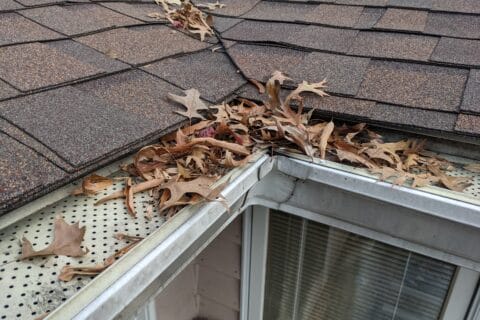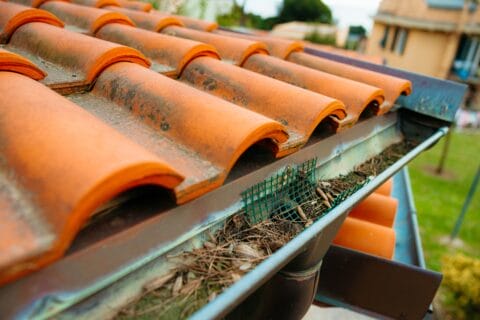Pressure Washing vs. Power Washing: What’s the Difference?
 Revised by Bruce Hulse
Revised by Bruce Hulse
Pressure washing and power washing are two widely employed methods for cleaning exterior surfaces. Although they appear similar and are often used interchangeably, these techniques have fundamental differences. Recognizing these distinctions—primarily related to water temperature and pressure intensity—allows homeowners, property managers, and business owners to make informed decisions about the most suitable cleaning method for their needs. Whether tackling routine maintenance or deep cleaning projects, choosing the correct technique ensures both safety and efficiency, while protecting the integrity and longevity of various surfaces.
Understanding the Fundamental Differences
Before selecting a method, it’s crucial to grasp what differentiates pressure washing from power washing. This understanding ensures appropriate and effective use across diverse applications.
What is Pressure Washing?
Pressure washing utilizes high-pressure water delivered at cold or ambient temperatures to remove dirt, dust, algae, grime, and other common surface contaminants. The cleaning power primarily comes from water pressure alone, without the addition of heat or detergents. This makes pressure washing a gentle yet highly effective choice for regular maintenance, particularly suitable for residential environments or surfaces that might be sensitive to heat or harsh chemicals.
Pressure washing proves effective on numerous residential surfaces. For example, homeowners commonly use pressure washing for exterior siding, wooden or composite decks, patios, walkways, driveways, garden furniture, vehicles, and boats. Because pressure washing doesn’t involve heat, it is safe for materials that might warp, discolor, or deteriorate when exposed to higher temperatures. As such, it has become the go-to choice for routine, non-intensive cleaning tasks, offering a reliable and eco-friendly cleaning solution.
In addition to its versatility, pressure washing is also relatively easy to operate and often more affordable than power washing. Many homeowners prefer pressure washing as a frequent, DIY-friendly method to maintain their home’s appearance, protect property value, and prevent dirt from turning into stubborn stains.
What is Power Washing?
Power washing also employs high-pressure water, but unlike pressure washing, it adds heat, typically heating water to temperatures around 200 degrees Fahrenheit (approximately 93°C). The heat significantly enhances the cleaning ability, breaking down stubborn substances like grease, mold, mildew, oil stains, chewing gum, and graffiti with greater effectiveness and speed.
Because of the heated element, power washing is typically reserved for tougher cleaning tasks, making it particularly beneficial for commercial or industrial settings. Typical applications of power washing include cleaning industrial equipment, commercial kitchens and restaurants, automotive garages, heavy machinery, warehouse floors, and areas with severe grease or oil accumulation.
Due to its combination of heat and pressure, power washing is highly effective not only at cleaning but also at sanitizing surfaces. The hot water effectively eliminates bacteria, mold spores, and other potentially harmful contaminants, making it ideal for environments where hygiene and sanitation are paramount.
Main Difference: Water Temperature
At its core, the fundamental difference between these two cleaning methods is water temperature. Power washing uses heated water to tackle tougher substances, whereas pressure washing relies solely on ambient temperature water pressure. The addition of heat in power washing provides enhanced effectiveness for particularly challenging cleaning tasks, whereas pressure washing offers a gentler approach suitable for routine and residential applications.
Applications of Pressure Washing
Ideal Surfaces for Residential Cleaning
Pressure washing is a cornerstone of Clear Ottawa’s exterior cleaning services. It’s a safe, effective method for restoring surfaces around the home without the risk of heat damage. One of the most frequent applications is on concrete surfaces such as front steps, walkways, patios, and driveways. These areas are exposed to constant foot traffic, vehicle residue, salt, and seasonal grime, especially after Ottawa’s long winters. Pressure washing clears away this buildup, restoring a clean, slip-resistant finish.
Wooden decks and fencing also benefit from pressure washing. Dirt, mildew, and algae often accumulate in shaded or damp corners, dulling the wood’s natural appearance. Because pressure washing uses ambient-temperature water, it minimizes the risk of splintering or warping, preserving both aesthetics and structural integrity when handled correctly.
Siding and Masonry Maintenance
Another critical area Clear Ottawa addresses with pressure washing is siding maintenance. Many Ottawa homes use vinyl or aluminum siding, which is durable but prone to collecting dirt, insect residue, and air pollution. Pressure washing effectively removes these contaminants, restoring brightness to the siding without harming the surface finish.
Pressure washing also plays a role in maintaining brick and masonry surfaces. Over time, bricks can become discolored from moss, water stains, and pollutants. A controlled pressure wash removes this buildup without compromising the integrity of mortar joints or decorative elements, helping homeowners maintain both function and curb appeal.
Whether revitalizing walkways, brightening siding, or preserving stonework, pressure washing remains an essential tool in Clear Ottawa’s residential maintenance toolkit—offering powerful results with minimal environmental impact.
Applications of Power Washing
When and Where to Use Power Washing
Power washing is a specialized cleaning technique that combines high-pressure water with elevated heat. This makes it especially effective for removing stubborn contaminants like grease, mildew, algae, and deeply embedded grime. Unlike pressure washing, which is ideal for routine maintenance, power washing excels in situations where heavy-duty restoration or sanitation is needed. For homeowners and business owners in Ottawa dealing with persistent buildup or preparing surfaces for treatment, power washing provides results that cold-water methods cannot match.
One of the most common residential uses for power washing is preparing surfaces for refinishing. When repainting siding, staining a deck, or resealing concrete, surface preparation is essential. Power washing helps strip away old coatings, embedded dirt, and organic matter, ensuring a clean base that allows new finishes to adhere properly and last longer.
Ideal Situations for High-Heat Cleaning
Certain materials and surfaces benefit particularly from the added heat that power washing offers. Concrete garage floors, patios, and stone walkways, for example, often accumulate salt, oil stains, and mold—especially after harsh Ottawa winters. Power washing’s heat-enhanced method penetrates porous surfaces more effectively than cold water alone, restoring their appearance and safety.
In light commercial settings, such as storefront entryways, restaurant patios, or public-facing walkways, the need for both visual cleanliness and sanitation is high. These areas experience frequent foot traffic and exposure to food waste, spills, and environmental debris. Power washing not only restores these spaces but also eliminates bacteria and mold, helping businesses maintain hygienic and welcoming exteriors.
Metal surfaces—like railings, loading docks, and kitchen vents—can also become coated in grease and grime that cold water can’t remove efficiently. The combination of heat and pressure in power washing makes it ideal for breaking down greasy residues quickly and thoroughly, saving both time and effort during maintenance.
In all of these scenarios, Clear Ottawa uses power washing selectively to ensure maximum effectiveness. It is the preferred choice for cleaning projects that demand deep penetration, surface sanitization, or pre-treatment preparation—while maintaining the structural integrity and long-term value of your property.
Comparative Analysis: Selecting the Appropriate Method
Both cleaning methods are effective under specific circumstances. Selecting between pressure washing and power washing depends on the nature of the surface, the type of contaminants involved, and whether sanitization is required.
Pressure washing should be chosen for general, regular maintenance tasks, especially in residential settings where delicate surfaces require care. It’s the preferred method when eco-friendliness, affordability, and regular upkeep are priorities. It’s particularly suited for lightly soiled areas, sensitive landscaping, and surfaces that might be damaged by excessive heat or intense cleaning.
Conversely, power washing becomes the optimal choice for handling severe stains, heavy grime, grease, or situations that necessitate sanitation. Commercial, industrial, or challenging residential projects often benefit from power washing’s robust capabilities. It significantly reduces cleaning time and effort for tough surfaces.
Benefits and Advantages of Each Method
Pressure washing is cost-effective, eco-friendly, versatile, and safe for delicate surfaces. Because it avoids the energy needed to heat water, pressure washing is typically less expensive and gentler on surfaces. Regular pressure washing also frequently reduces reliance on chemical cleaners, making it ideal for environmentally conscious property owners.
Power washing, however, boasts the advantages of being highly effective at removing stubborn contaminants, providing enhanced sanitization through heat, and being exceptionally time-efficient for challenging jobs. Its heavy-duty capabilities make it indispensable in industrial and commercial cleaning scenarios.
Precautions and Best Practices for Safe Cleaning
Regardless of which method you choose, safety is essential. Both pressure and power washing involve risks, including personal injury, property damage, or surface degradation if improperly executed. Follow best practices, such as wearing protective gear (gloves, boots, eye protection), testing small inconspicuous areas before full cleaning, maintaining a safe distance between the nozzle and surfaces, protecting electrical outlets, and sensitive landscaping, and seeking professional assistance if uncertain about techniques or safety measures.
Taking safety seriously ensures your cleaning tasks are effective without risking unintended damage or injury, whether you handle it yourself or engage a professional service.
Conclusion: Choosing the Right Method for Your Needs
Clearly understanding the distinct differences, advantages, and ideal applications of pressure washing versus power washing empowers homeowners and commercial property owners to choose the most effective cleaning method for their specific circumstances. Pressure washing excels at regular maintenance, residential use, and gentle cleaning tasks, while power washing provides powerful cleaning and sanitizing capabilities for tougher, heavily contaminated environments.
By choosing wisely, you protect surfaces, save time and resources, maintain safety standards, and preserve the aesthetic and functional value of your property over the long term. Whether maintaining your home, business, or industrial facility, selecting the appropriate cleaning method ensures superior results and peace of mind.


